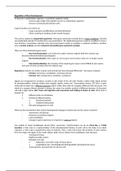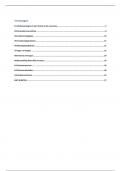Samenvatting
MOB-30806 | Regulation of Plant Development Summary [WUR]
- Vak
- Instelling
- Boek
Summary of the course Regulation of Plant Development [MOB-30806], a master course given at the Wageningen University. The summary consists of all theory given in the lectures, filled with additional notes and theory as the course only consisted of lectures.
[Meer zien]





